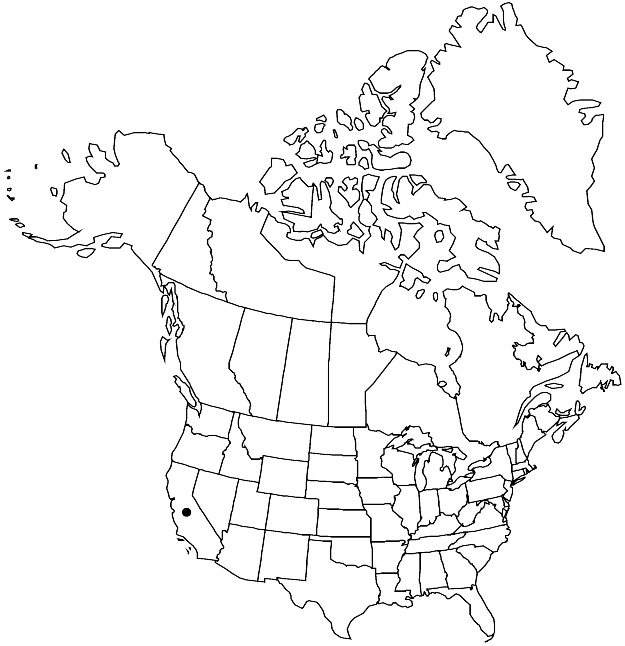Streptanthus vernalis
Madroño 52: 202, fig. 1. 2005.
Annuals; glabrous throughout. Stems unbranched or branched distally, 0.2–2 dm. Basal leaves (soon withered); not rosulate; shortly petiolate; blade (fleshy), broadly obovate to suborbicular, 1.5–4 cm, margins coarsely dentate. Cauline leaves: blade ovate to oblong, 0.5–1.8 cm × 1–7 mm, (much smaller distally), base auriculate to amplexicaul, margins entire. Racemes ebracteate, (lax, sometimes secund). Fruiting pedicels divaricate-ascending, (straight), 1–2 mm. Flowers: calyx urceolate; sepals (erect), green, (ovatelanceolate), 5–7 mm, keeled, (apex recurved); petals white, 6.5–8 mm, blade 1.5–2 × ca. 1.5 mm, margins not crisped, claw 5–6 mm, about as wide as blade; stamens in 3 unequal pairs; filaments: abaxial pair (connate 1/2 their length), 3–4 mm, lateral pair 1.5–2.5 mm, adaxial pair (connate their whole length, usually recurved), 6–8 mm; anthers: abaxial and lateral pairs fertile, 1.5–2 mm, adaxial pairs sterile, ca. 0.7 mm; gynophore 0.2–0.5 mm. Fruits divaricate-ascending, torulose, straight, flattened, 3–5 cm × 1.5–2 mm; valves each with obscure midvein; replum constricted between seeds; ovules 16–20 per ovary; style 0.1–0.2 mm; stigma entire. Seeds oblong, 1.6–2 × 1–1.2 mm; wing 0.1–0.2 mm wide, distal.
Phenology: Flowering Mar–May.
Habitat: Serpentine talus and gravel
Elevation: ca. 600 m
Discussion
Streptanthus vernalis, which is known from the Three Peaks in Lake County, is most closely related to S. brachiatus and S. morrisonii. All three species have the replum constricted between the seeds, a feature not known elsewhere in Streptanthus. They also have auriculate-amplexicaul middle and distal cauline leaves, torulose fruits, urceolate calyces with keeled sepals, fruiting pedicels rarely to 4 mm, and connate median filaments. Streptanthus vernalis is distinguished from the other two by being annual (versus biennial), without (versus with) basal rosettes, and having non-mottled (versus mottled) basal leaves, green (versus rose-purple, violet, or yellowish) sepals, petals without (versus with) darkly veined blades, and fewer (16–20 versus 22–38) ovules per ovary.
Selected References
None.
Lower Taxa
"elongated" is not a number."thick" is not a number."dm" is not declared as a valid unit of measurement for this property.
